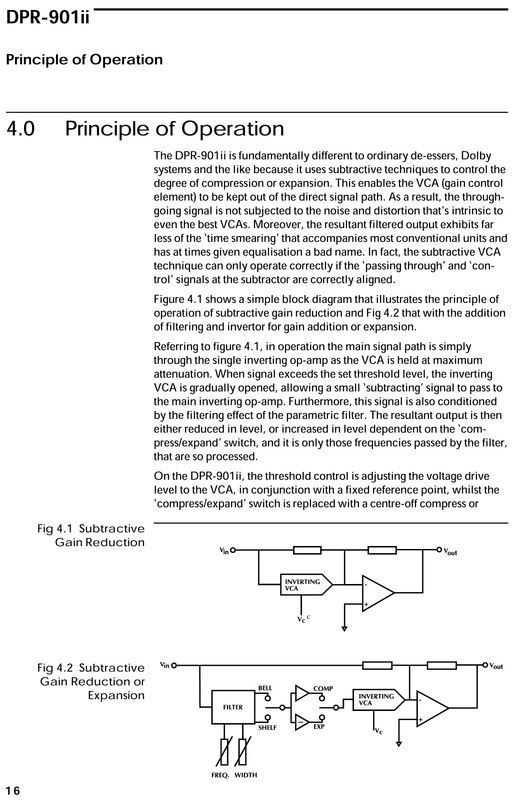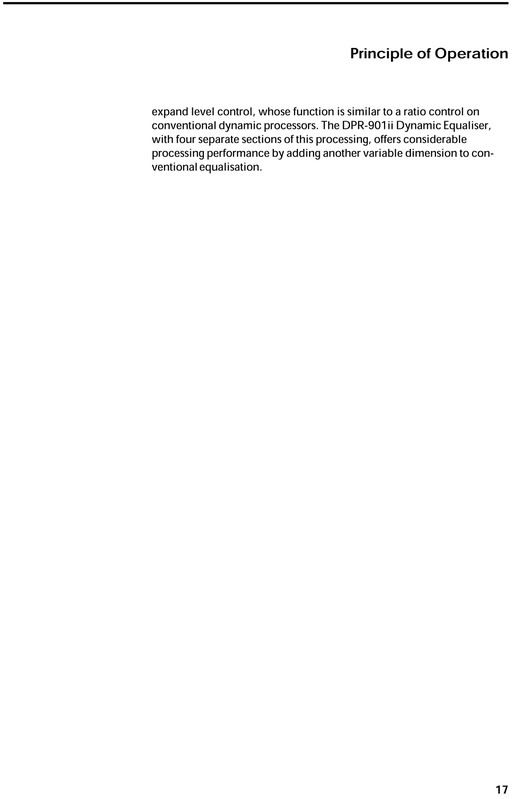Why do we need matching/predictable look-ahead?
Well, if you don't have that, the ONLY topology which you can go with is feed-back, -otherwise things are WILDLY out of control.
Feed-back is no small undertaking in this matter. You have to monitor ONLY the affected band, since out-of-process-band parts of the spectrum will skew your compression. Vactrols are a LOT more predictable than Cadmium-Sulphide optos, but nowhere near as well-behaved or predictable as VCAs...
If you're talking about band-splitting a signal, doing DOWNWARD gain control only, and re-combining, then you're really steering yourself back towards the kingdom of multi-band compression/limiting. If you want frequency selective gain increase/gain reduction to differentiate your project from a MBC/MBL, you're heading into 901 territory.
-Yes, the 901 looks expensive to build because it has about a hundred LEDs on the face of it, which looke like a frivolous lightshow, but when you USE the device, you HAVE to be VERY aware of when it kicks in and -more importantly- when it's GOING to kick in... If you have lots of upward gain expansion set, things can go into feedback live if your gain-staging isn't correct, and you need to have some warning of impending action.
But don't just take my word for it: -ask a user: Pucho or Kvintus for example. See if they think you could strip that box down at all and have anything useable. -I bet the only thing you MIGHT be able to lose is a fourth band, but sometimes even all 4 bands get used, other times one or two only. -Our particular unit is the later version which allows you to "split" the two mids away to a seperate path and therefore have a pair of 2-band devices if you don't need all four.
Having used it and knowing it's capability, i think they're VERY useful for problem-solving. However, If you blindfolded me, or reduced the displays, I would have a VERY hard time setting it. -and working fast especially, you NEED gear to be helpful and informative, NOT difficult or obstructive.
-And "Can't you HEAR when it's working how you like it?" doesn't cut it for me: this is NOT full band squashing, and the effect is VERY subtle at times, so it can be VERY difficult to hear indeed. Onset, ratio and amount can be difficult to judge when the source signal varies a lot: like the difference between a "Sh" sound on a vocal and a "Mmm" sound for example... is it compressing or is he singing softer? Am I doing too much? -Without informationthis stuff is impossible to use. -Now, how are you going to get information from a vactrol? -You can't meter only the narrow band sidechain audio signal and get anything meaningful, beause it won't represent anything the brain/eye can easily make sense of... (if you were set to high frequencies, it would ignore most singing and hit the end-peg as soon as he whispers an "S" for example...)
So you're pushed back to reading meaningful control voltages for Gain control, and perhaps a band meter for threshold/onset... and you're being pushed towards building something that worls like a 901 again...
Hey, prove me wrong. -PLEASE. -But I've looked at this before, and I really do think that BSS just got it right. I mean if you really want to build the ultimate analog console surface, you end up with something that looks a LOT like an SSL G series... if you want the ultimate dynamic equaliser, you end up with something that starts to look a LOT like the BSS.
Keith















